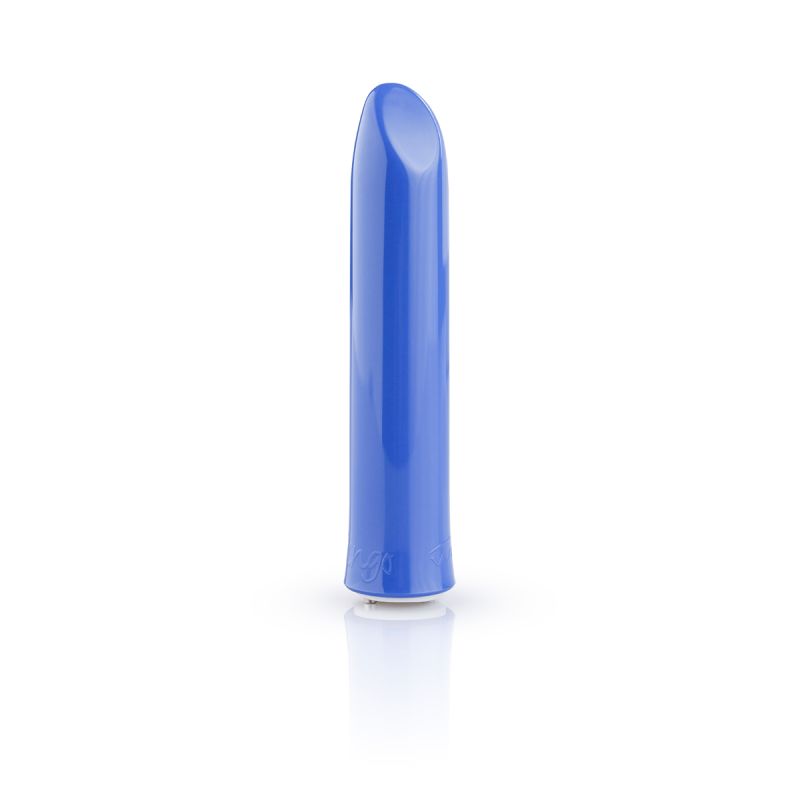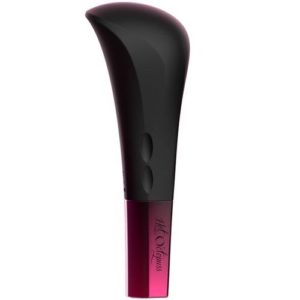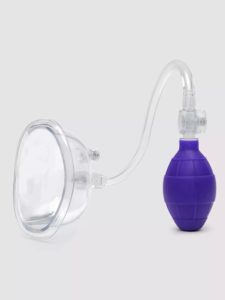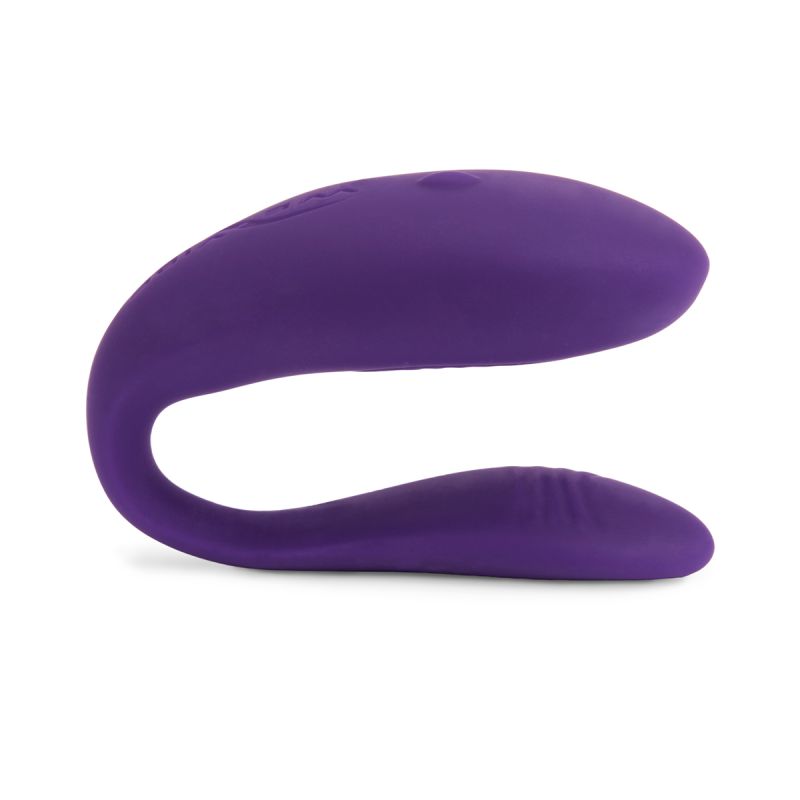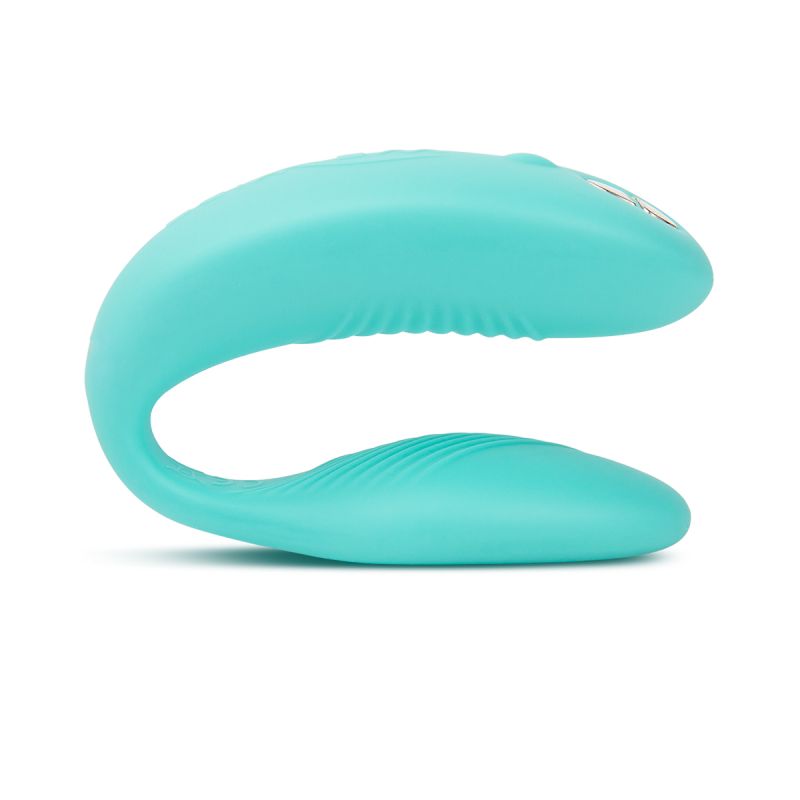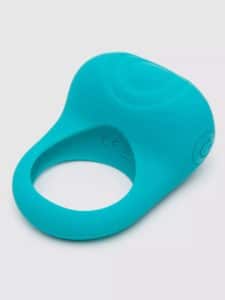Advertising disclosure: This content contains affiliate links and sponsored product placements. That means that if you make a purchase through one of these links, we receive a commission. See our Advertising Disclosure page for more info.
Table of Contents
For women, trouble reaching orgasm can be a sign of a physical, emotional or relationship issue…but often, a lack of the right kind of stimulation is the cause.
Many years ago when I was a young doctor at the start of my OB/GYN practice, an equally young patient came to me with a question that took me by surprise.
She wanted to know if she’d ever had an orgasm.
I had no idea what to say. You may find this difficult to believe, but during OB/GYN residency there was very little or no time dedicated to female sexuality and orgasm. How could I answer the question and help my patient?
Thankfully, help was at hand. My nurse was older and experienced in the office practice of OB/GYN. After we left the room so the patient could prepare for the exam, she put her hand on my arm, looked at me kindly and said:
“Doctor, if she wonders if she’s had an orgasm, she hasn’t had one.”
So began my learning on female sexuality.
In this article, let’s discuss female orgasm, possible reasons for trouble reaching orgasm, and how to make sure it happens without difficulty.
Orgasm 101: What is it, and what does it feel like?
Everyone has his or her own way of describing the sensation and experience of orgasm. I define it as an explosion of warm, delicious pleasure that travels from the tips of your toes to the top of your head. Many people describe orgasm as a release, after which you feel relaxed and have a powerful sense of contentment and wellbeing.
What’s responsible for this “afterglow” feeling? Orgasm releases a cocktail of hormones and brain pleasure-center neurotransmitters that are responsible for feelings of euphoria, trust, good mood, caring and closeness, relaxation and sleepiness.
How is arousal and orgasm different for women and men?
Women and men have the same four basic stages of sexual arousal: excitement, plateau, orgasm and resolution. How they experience these four basic stages is very different!
Men in general are more easily aroused. The sight of an attractive person or a sexy thought and it’s off to the races! Women, in general, have a much more variable sex drive and need context to become aroused.
The plateau phase—the advanced stage of arousal that precedes orgasm—is shorter in men than in women. Men reach a point during this stage when they can’t hold back an orgasm. Women don’t have this inevitability. An orgasm can slip away even as it’s happening.
This shorter plateau phase in men can result in orgasm occurring far sooner than they or their female partners would like. They’ve had an orgasm and are awash in relaxation and sleepiness hormones while their female partner is just getting warmed up! As men get older, this becomes less of a problem.
The amount of time to reach orgasm can vary a lot for both women and men. Some women can reach orgasm in minutes with the right stimulation, while others need closer to an hour. That said, the average time for women to reach orgasm is about 20 minutes (with enough clitoral stimulation), while for men it takes about 5–6 minutes of penile stimulation to reach orgasm. Intercourse/penetration provides enough stimulation for most men; for most women, it does not. We’ll talk more about that in a minute.
Good sex takes practice and consideration.
The difference in arousal time between men and women isn’t an insurmountable obstacle to great sex. With practice, a man can learn to control and slow down his plateau phase. This gives his partner time to reach orgasm at her own pace—even before he ejaculates. Mutually satisfying sex takes a willingness to accommodate differences and help each other along the path to orgasm.
Why do some women have trouble reaching orgasm?
First of all, only about 25% of women achieve orgasm with penetration alone. This is due to insufficient stimulation of the clitoris and the G zone during standard missionary position intercourse. More later on this.
Orgasm for women can be affected by several other physical, relationship, or psychological factors. Pain and discomfort are obvious distractors on the path to pleasure. Troubles within the relationship or with her own self-image may make it difficult for a woman to “let go” enough to experience an orgasm with her partner.
Physical factors:
- Pain caused by vaginal or pelvic infection, pelvic surgery or radiation, and menopause
- Chronic disease: diabetes, high blood pressure, multiple sclerosis
- Medications used to treat chronic illnesses, such as antidepressants and blood pressure medication
- Too much alcohol
- Smoking
Relationship factors:
- Not enough time spent in foreplay
- Unresolved couple conflicts and lack of communication
- Infidelity and loss of trust (orgasm requires a measure of trust and vulnerability)
Psychological factors:
- Anxiety and depression
- Stress (work, raising children, family conflicts, etc.)
- Shame around sex and sexual expression
- Poor body image
- Cultural and religious beliefs
- Past sexual abuse
If you take a medication for a chronic illness, ask your doctor if it could be affecting your sexual response. If so, discuss a change in medication or a lower dose. Many times, medications can be safely adjusted if you just know to ask! Moderate your alcohol intake and if you smoke, stop.
If you are menopausal or beyond and experiencing dryness and discomfort during sex, talk with your doctor about estrogen therapy. It can help a lot with vaginal wall pliability and lubrication.
Relationship and psychological factors are obviously more complex than changing or starting a medication. A mental health professional who specializes in the areas of sex and relationships can help. The hard work of therapy is well worth it if it improves your relationship and wellbeing. Sexual health and wellness are too important to the overall quality of life to ignore.
I’m still having difficulty reaching orgasm during penis-vagina intercourse. What can I do?
If the above factors aren’t the problem, a lack of the right kind of stimulation could be the issue.
This is important—most women do reach orgasm without difficulty…just not during intercourse. Most women require clitoral stimulation to reach orgasm (and plenty of it!) and don’t climax from penetration alone.
Many studies support these conclusions, including:
- Elizabeth Lloyd, faculty member of the Kinsey Institute at the University of Indiana-Bloomington: only 10-30% of women reach orgasm with penetration alone.
- Journal of Sex and Marital Therapy: 18.4% of women reported intercourse alone was insufficient for orgasm.
This comes as a surprise to many people because it goes against what we were taught, have seen in movies, or have read about in erotic books. There, intercourse is portrayed as the be-all-and-end-all of orgasmic pleasure!
If you (or your partner) doesn’t orgasm from intercourse alone, that’s not a cause for worry. Most women don’t! The key is clitoral stimulation.
Let’s look at how to make sure it happens without difficulty.
1. Communicate with your partner.
Make sure your partner knows that women rarely orgasm during intercourse—it’s no reflection on their performance! Understand together that, unlike what is shown in movies, orgasm rarely happens simultaneously. It can be a fun goal to work towards if you both want to, but only if there is no pressure.
Let your partner know what feels good or doesn’t feel good, and ask the same of them. Share without fear of criticism or judgment.
2. Experiment with new positions that create friction against the clitoris and G zone.
The standard missionary position (penetrating partner on top) is very intimate but usually doesn’t provide enough clitoral stimulation without some adjustments. Try placing a pillow or positioning wedge under your hips. Elevating the hips puts your clitoral area in contact with your partner’s pubic bone, providing indirect stimulation. The cowgirl (receiving partner on top) position also provides this friction. For more on this, take a look at our article on Sex Wedges.
3. Work manual clitoral and G zone stimulation into intercourse.
Ask your partner to slip a hand between your bodies or reach up or around to provide manual (finger) stimulation to your clitoris during intercourse. You can also do this for yourself. Many people find it extremely arousing to watch their partner’s self-pleasure.
4. Try sex toys.
Use a clitoral and/or G zone vibrator as part of foreplay or, if you prefer, before beginning sex. Think of this as a warmup to move you further along the arousal path, so you and your quicker-to-arouse partner will start sex closer to the same point. This is especially helpful if you require prolonged, intense and consistent stimulation to become aroused—there’s nothing wrong with that, and it can be a normal result of aging and menopause.
Bullet Vibrators
Bullet vibrators are small and easy to use and can provide strong, direct stimulation to the clitoris. They feel great just about anywhere on the body. Men can enjoy them, too! With aging comes slower arousal times, and he can benefit from the extra intense stimulation. Two good quality examples are the We-Vibe Tango and Hot Octopuss AMO.
Clitoral Pumps
Many women find that using a clitoral pump helps them reach orgasm. Clitoral pumps create suction that draws blood into the clitoris, making it more sensitive. You can then enjoy a vibrator, manual stimulation or oral stimulation to reach orgasm. For more on this, see our article on Clitoral Pumps.
Couples Vibrators
These are vibrators that are designed to provide extra clitoral stimulation during intercourse.
The We-Vibe Unite and We-Vibe Sync have a smaller “arm” that is worn inside the vagina to keep the toy in place, and a larger arm that wraps around the front to stimulate the clitoris. The Unite toy offers clitoral vibration, while the Sync toy offers both clitoral and internal G-zone vibration. The arms are flexible and the toy is small and unobtrusive, so it doesn’t get in the way of penetration.
Vibrating Couples Rings
These rings are worn on the penis and have a vibrating component that provides extra clitoral stimulation. Rings can also help maintain an erection for intercourse.
So what about the patient who asked if she’d ever had an orgasm?
I later learned that her husband asked her to go to the doctor because he was worried he wasn’t pleasing her. He thought there must be something wrong because he couldn’t get her to reach orgasm during intercourse. She admitted she knew she could orgasm through masturbation, but she hadn’t wanted to tell that to her husband.
Another case where unrealistic expectations, lack of communication, and the belief that women orgasm from intercourse alone had created a problem where there wasn’t one.
What is the take-home message?
1. Women and men have the same four stages of sexual arousal but experience them very differently.
2. Intercourse/penetration provides enough stimulation for most men; for most women it does not.
3. Orgasm for women can be affected by many physical, relationship or psychological factors—but there are solutions.
4. Most women require clitoral/G zone stimulation to reach orgasm (and plenty of it!) and don’t climax from penetration alone.
5. Try different positions, manual and oral stimulation, and sex toys to increase the amount of clitoral stimulation before and during sex.
6. Communicate. Good sex takes practice and consideration. The results are well worth it!
References
Brennan, Grant Hilary MD, 11 reasons why women might not have orgasms, www.psychologytoday.com/us/blog/expiramentations/201802/11-reasons-why-many-women-might-not-have-orgasms
Castellanos, Madeleine, Good in bed, www.sharecare.com/health/sex-and-relationships/what-differences-male-female-sexuality
Cohen, Lisa J. PhD, Does sexuality differ for men and women?,www.psychologytoday.com/us/blog/handy-psychology-answers/201102/does-sexuality-differ-men-and-women
El, Kok, MBChB,Difference between male and female sexual functioning, SA Fam Prac 2004;46(4):12-15
Krause, Rachel, Anatomy may be the cause of your orgasm woes,www.stylecaster.com/anatomy-inability-to-orgasm-sex/
Oberhaus, Daniel, The biggest-ever orgasm study tells us more about how women come,www.tonic.vice.com/en_us/article/neepb8/the-science-of-female-pleasure=still-needs-more-attention
MayoClinic, Anorgasma in women, www.mayoclinic.org/diseases-conditions/anorgasmia/symptoms-causes/syc-20369422


